America’s most famous traveler — besides Carol and me, I say with a wink — was actually a Frenchman: Alexis de Tocqueville. He rode all over the young United States in the 1830s and produced a remarkable study of the American people.
What amazed this young political thinker more than anything else was the influence of religious, fraternal, and civic organizations — and secret societies — on the American democracy.
De Tocqueville observed that they made our communities stronger, more interesting, and, to use a word that’s popular these many decades later, more engaged.
Eons ago when I was news director at the ABC radio affiliate in Washington, D.C., I joined the Rotary Club. It was, and is, one of the “service clubs” that bring business professionals together for fellowship, a bracing talk by some bigwig (or mediumwig) over lunch, and worthwhile community-service projects.
The Rotary Club in Chicago, Illinois, was the world’s first service club. It was formed by an attorney, Paul Harris, who wanted to foster the kind of community spirit he had experienced as a boy in small Midwest towns.
The “Rotary” name was taken from his club’s habit of rotating meetings among the offices of its members.
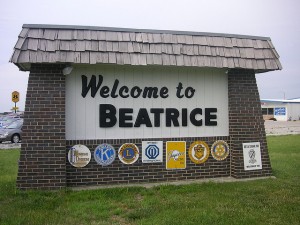
As you can see, a number of service clubs joined in promoting the town of Beatrice — pronounced be-AT-triss, by the way — Nebraska. (blmurch, Flickr Creative Commons)
Rotary International’s slogan is “Service Above Self.” Kiwanis’s is “Serving the Children of the World.” The Lions Club’s motto is even simpler: “We Serve.” And the Optimist Club calls itself the “Friend of Youth.”
Along with community service, these and similar groups are “networking” vehicles for civic and business leaders, including up-and-comers, as I was at the time. (Whether I up-and-came is debatable.) For a long, long time, their members were almost exclusively men, who spent a lot of their club time schmoozing and “pressing the flesh.”
These days, women execs are almost as likely to be the ones shaking your hand.
Fraternal organizations such as the Elks and Moose and Eagles, the Odd Fellows and the Shriners — an offshoot of the Freemasonry movement — the Catholic Knights of Columbus and the Jewish B’Nai Brith have served much the same purpose even longer. The activities of some of these groups on occasion include a bit of boozing as well as schmoozing. And years ago more than today, some meetings were spiced with mysterious rituals and costumes, passwords and secret grips.
There’s even a “United Order of True Sisters,” the oldest of them all, still at work. It was founded in 1846. Gone, though, are the “Ancient Order of Zuzumites,” an “Order of Mules,” and something called “The Improved Order of Heptasophs,” whose main service appears to have been selling life insurance to its members.
My first father-in-law, Bob, was a Shriner and a gifted clarinetist — the best in Dayton, Ohio, everybody said. I believed it, listening to him wail on his “horn,” as he called it. It was one of his few professed joys to march in Shriners’ parades, wearing his fez and sash and ribbons and blowing that horn toward the sky ahead of other Shriners who were weaving about the parade route in kiddie-sized convertibles.
This sounds frivolous until you learn that these marchers raise money that goes to Shriner Hospitals for terribly sick and wounded kids, whose families don’t pay a cent for their treatment.
Just as a twinkle and a few smiles appeared when Bob played that horn and passed the donation can for sick children, I smiled more than usual at Rotary Club meetings, greeting other members and sharing business “war stories,” listening to speakers from many walks of life, and visiting nursing-home patients on the club’s behalf.
In these settings I became a hail fellow well met, and many friendships resulted from those warm moments away from the office.
Unfortunately, though, these days, many service and fraternal organizations have something besides fellowship and good works in common:
They’re hurting — badly — for members.
Last year, for instance, W. E. Russell reported that membership in the U.S. Junior Chamber of Commerce — a civic association for young leaders — had dropped from 140,000 in 1993 when he was the Jaycees’ president, to fewer than 50,000. That’s a 64-percent decline in 17 years.
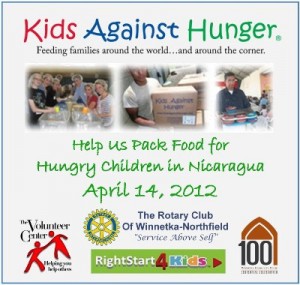
This year, the Rotary Club shared by Winnetka and Northfield, Minnesota, promoted this food drive to help local hungry kids. (learningexecutive, Flickr Creative Commons)
According to a Chicago Tribune story in 2009, Rotary International’s U.S. membership fell from a peak of more than 445,000 in 1996 to 376,000 just 11 years later, in 2007. The Indianapolis Star reported in 2008 that “Lions and Kiwanis clubs, Shriners and other service organizations are pondering their futures as membership dwindles and average ages grow older.”
And last year, Richard Fletcher, executive secretary of the Masonic Service Association of North America, reported that there were an estimated 1.5 million Masons in the United States — a precipitous descent from more than 4 million members half a century earlier.
As the Janesville, Wisconsin, Jaycees chapter came close to disbanding in 2009 because of an ebb in membership, its secretary/treasurer, Cindy Miser, noted, “Years ago, when you were in a certain business, you almost had to belong to a service club, but it’s not that way anymore.’’ One fellow who read this in the Janesville newspaper commented, “If the decline in [service organization] enrollment continues, the Optimists will soon become the Pessimists.”
“Desperate for members, Jaycees hold recruitment drive,” a headline in the Inside Business journal in Virginia’s “Tidewater” area that includes Norfolk and Virginia Beach put it in a 2010 story.
Not looking for members. Not hoping to get some. Desperate for them. The membership of the club, in operation for 90 years, was down to 20.
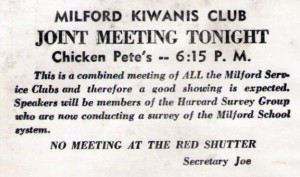
A good chicken dinner is a drawing card for this Kiwanis Club. (Svadilfari, Flickr Creative Commons)
The Jaycees are hanging on in Norfolk, though, and are up to about 30 members, thanks to the hard work of a couple of stalwarts. But one of them, Julie Landversicht, told me that they’d soon be losing several members because of the organization’s age limit of 40. Otherwise, “We get people [nonmembers] who’ll volunteer to help out at our events [including a festival at a children’s hospital], but they won’t commit to joining,” Julie says.
Quite a few chapters of civic organizations have lost the fight and are defunct. Or they’re reduced to old folks sitting around, reminiscing about the good-old days. In a lot of towns that Carol and I have visited, the only reason you’d know an old grocery store or pet shop was once the Odd Fellows hall or Moose lodge is the faded symbol you can still barely make out above the door.
The reasons for the falloff in civic-club participation are many, varied — and troubling for society.
• Pressures on young executives’ time. Many report that in today’s dog-eat-dog economic environment, it’s hard for what one observer called “the anxious [and shrinking] middle class” to justify heading off for a chatty Kiwanis Club lunch once a week, let alone taking the time to recruit other members. And much as busy execs find it worthwhile, volunteering at hospitals, soup kitchens, kids’ camps, and the like is even more time-gobbling and discretionary.
Discretionary, meaning “I won’t be doing much of that any longer.”
• Money pressures, even though the cost of membership in service organizations is nominal. A lot of belt-tightening businesses no longer pick up that cost, let alone executives’ lunch or bar tabs.
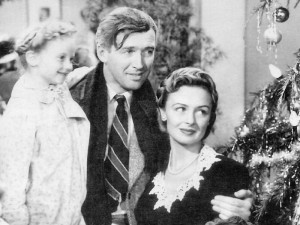
George Bailey (Jimmy Stewart) and his family saved the Savings and Loan in no small measure because the community knew him well. Managers of big banks’ branches rarely are in place long enough to develop such trust. (Wikipedia Commons)
• Businesses aren’t as “local.” More and more banks, real-estate firms, insurance companies and such have become branches of far-flung chains. Entrenched hometown operations such as fictional hero George Bailey’s “Bailey Building and Loan” association in the 1946 classic Christmas movie “It’s a Wonderful Life” are rare.
“Community spirit” doesn’t simmer quite as vigorously in executives who are cycling in for a short time, then shuffling out of town.
• Fewer young executives work where they live. As small towns struggle, their “best and brightest” often must commute to jobs in larger cities. It’s hard for them to get involved in their towns’ service-club lunches and projects, even if they’d like to.
• Service clubs get “stuck in their ways.” As one disgruntled member commented, “The ‘old’ members don’t want anything to change, and the ‘new’ members get rebuffed at every suggestion they make. So they leave and tell their friends, and soon, guess what . . . no more new members come to try their luck!!!!”
• There are newer, easier, and cheaper ways to “network.” As Inside Business reporter Bill Cresenzo wrote in 2010, “[P]eople are living their lives online now more than ever, sometimes at the expense of real-life activities.” And it’s often easier to connect with others on the Sabbath following religious services, over a friendly poker game, or on the golf course than to get involved in a service club. If it’s a choice between them, service-club time bites the dust before one gives up a weekly golf game with business clients and prospects.

Unfortunately for service clubs, people can get involved in civic causes without having to spend time at meetings, fundraising events, and visits to the underprivileged. (lorangii, Flickr Creative Commons)
• And Americans’ fondness for “joining” has narrowed. Membership in service clubs — not to mention unions and neighborhood-improvement organizations — is down, but there have been big gains on the rolls of “interest groups” such as the Sierra Club, the National Rifle Association, and the American Association of Retired Persons. These organizations demand relatively little of their members’ time.
Volunteering appears to be up, but it’s primarily among retired people who have the hours for it. A retired friend of mine, for instance, drives an animal-rescue van, umpires youth baseball (for a pittance), and serves as a “starter” at a public golf course.
Americans today are also deeply involved in “self-improvement” and “self-help” groups. And in political and charitable “causes” — usually from afar through clicks on our mouse pads or donations via the computer screen. As Mark Chaves, a sociology professor at the University of Arizona, has written, “Generally speaking, the increases [in self-help and advocacy involvement] do not promote face-to-face connections among people.”
So how did we get where we are?

Individual interests are trumping group civic involvement in many American towns and cities. (Sean MacEntee, Flickr Creative Commons)
In 1985, the book Habits of the Heart explored the consequences of what, 10 years later, critic John C. Purdy, would call “individualism and the crisis of civic membership.”
This had been a nation built on the resolve, guts and hard work of “rugged individuals,” University of California sociologist Robert Bellah and four collaborators pointed out in Habits of the Heart. But the rough places were tamed, dusty towns grew into teeming cities, and opportunities for individuals to stand out in a crowd diminished.
So Americans developed “social identities” through “civic membership.” We began to cooperate for mutual benefit and along the way discovered that we enjoyed spending time with other committed, interesting people.
Until lately, that is, when our lives got really busy and financially frightening, and we began to withdraw into ourselves and our families, almost as a defense mechanism.
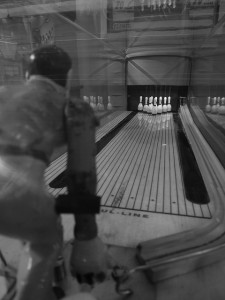
Bowling alone is a powerful metaphor for the direction of American society. (chad_k, Flickr Creative Commons)
This change was well underway by 1995, when Robert D. Putnam, a Harvard government professor, published “Bowling Alone,” an essay in the obscure Journal of Democracy. Its full title was “Bowling Alone: America’s Declining Social Capital,” and it struck such a nerve that Putnam turned it into a book that became a surprise best-seller.
He wrote that even relaxed bowling leagues had lost their social value. People still bowled, but fewer of them had the time or inclination to form teams. Busier, less communal, more into themselves and their families, they preferred to bowl alone.
Putnam blamed this distancing from one another on the societal villain of the time — that siren, television — and on a weakening of “civil discourse” and “civic engagement.” The result of disengagement from civic activities, he wrote, was a virtual collapse of American “associational life.”
Combine this with a declining trust in government and politicians; the loud drumbeat for individual rights, individual expression, and individual recognition; and the pressures of time and “making it” financially, and something had to give.
That “something” is often the monthly meeting of the Native Daughters of the Golden West or the Royal Templars of Temperance, the weekly Rotary Club luncheon, or the Saturday-night bowling league.
So here’s a footnote to Alexis de Tocqueville’s report:
By and large, we are no longer a nation of joiners.
—
If you made it this far and are still curious, you may be wondering what in the world the “Improved Order of Heptasophs” could have been about.
The group was organized in 1878 in Baltimore, Maryland, for the purpose of “uniting fraternally all white men of sound bodily health, good moral character, socially acceptable, engaged in an honorable profession, business, employment or occupation, between 18 and 50 years of age.”
The Heptasophs lasted until 1917, when they merged with something called the “Fraternal Aid Union.”
“Hepta” is Greek for “seven.” “Soph” comes from the Greek “sophos,” for “wisdom.” According to a Freemasonry Museum Web site, the name referred to “Seven Wise Men.”
The founders, perhaps?
As for the Ancient Order of Zuzumites, your guess is as good as mine.
Ted's Wild Words
These are a few words from this posting that you may not know. Each time, I'll tell you a little about them and also place them into a cumulative archive of "Ted's Wild Words" in the right-hand column of the home page. Just click on it there, and if there's another word that you'd like me to explain, just ask!
Fez. A conical, though flat-topped, red hat, worn in several Muslim countries and by members of fraternal organizations such as the Shriners.
Hail fellow well met. An Old English expression describing one who is cheery, outgoing, offering others exuberant and friendly greetings.
Schmooze. To chat intimately and often animatedly with another person or small group. The word is of Yiddish origin.


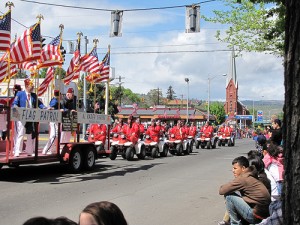
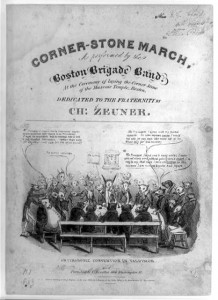

One response to “PLEASE Join!! Service Clubs Plead for Members”
Thanks! This was a really interesting article. The Lions are still very visible in Columbus, Oh, but I think it’s because their biggest sponsor is the local daily paper and they do an annual collection at busy intersections. The money is used to buy new school clothes for needy kids. It’s a shame that people don’t make the time to actually personally volunteer more but I have to plead guilty, myself.